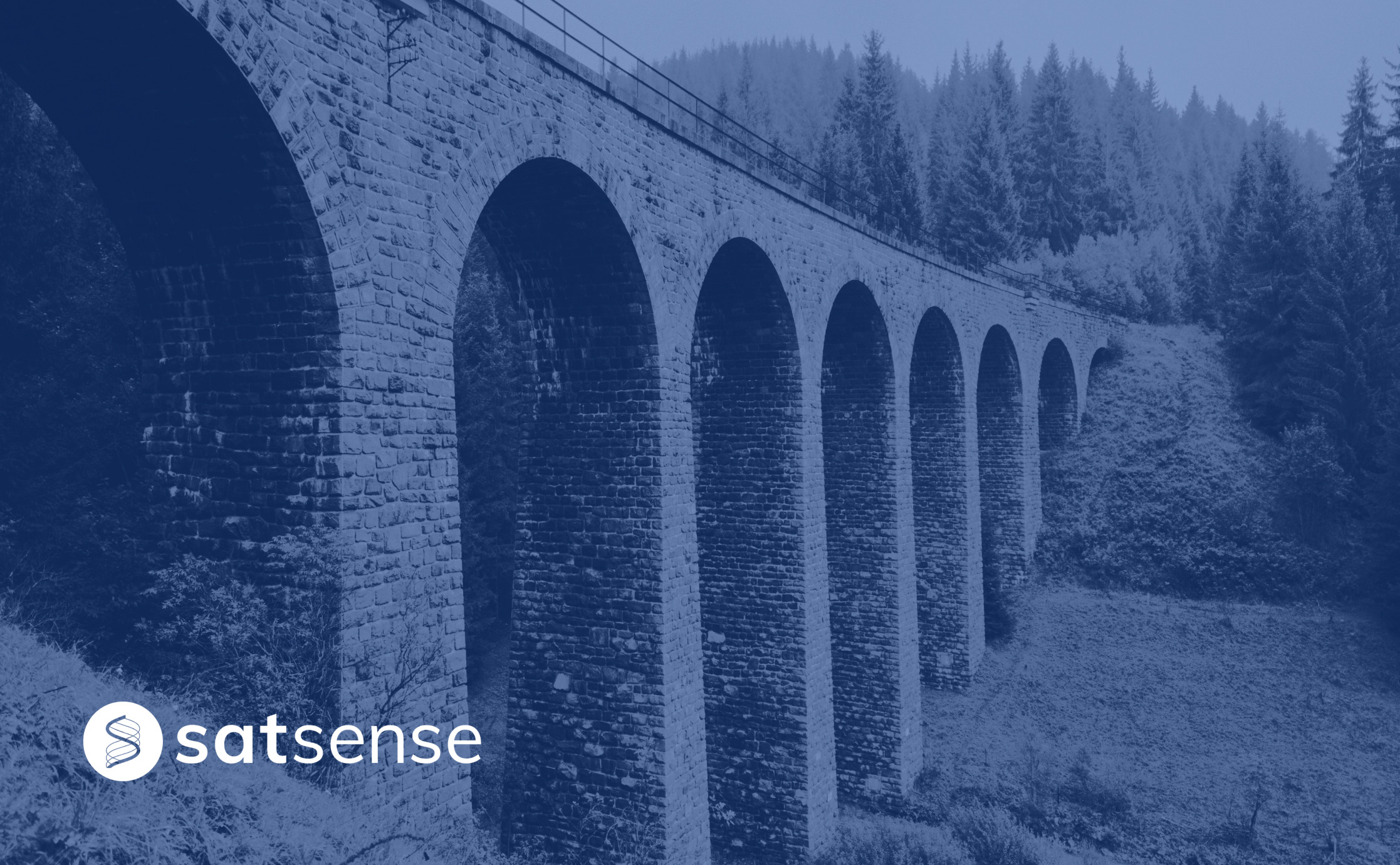Bridges are a critical component of any nation’s transport infrastructure. In the UK, road bridges were typically designed with a lifespan of 100 years. However, due to steady increases in both the number and weights of crossings through time, extra stresses are being placed on assets that may not have been considered when they were first engineered.
Why Are UK Bridges At Risk?
The risk of infrastructure deterioration in the UK is continually rising due to steady increases in both traffic volumes and vehicles weights crossing bridges. This is compounded by the increasing effects from environmental factors, which are becoming more frequent and intense as a result of climate change. Bridges designed and built over 50 years ago are currently coping with these unexpected loads. However without continued maintenance, monitoring and upgrade, there is a potential that these ageing structures will begin to reflect the associated risks.
A recent investigation by
The Times, found that approximately 4,000 of 9,000 bridges and culverts on motorways and A-roads present evidence of defects or damage, that could substantially affect their capacity in future. Eventually this might lead to requirements for weight restrictions or in some cases complete closure. Similarly, figures released by Highways England stated that
141 bridges along the M6 are presenting severe defects and are in very poor condition. Weight-restricted bridges are unable to carry heavy vehicles, which means that HGVs (with weights now up to a whopping
44 tonnes) are required to take economically and environmentally costly detours.
Substandard Bridges, A Growing Problem
The number of
substandard bridges owned by councils in Britain has risen
by 3.4% in 2021. These bridges are subject to weight restrictions and increased monitoring programmes. A report from local authorities showed that, in 2021,
17 bridges with a span of at least 1.5 metres had fully collapsed, with another 37 partially collapsed.
The upkeep of these long-established transport routes is crucial. As population growth increases, so too does our reliance on infrastructure. Ground motion, including subsidence, heave, landslides and settlement, can detrimentally impact infrastructure around its foundations. Signs of defects, such as cracks, can present warning signs of ground motion, which if left unnoticed or unrepaired may result in critical damage to bridges. A case in point is the closure of the carriageway across the 135-year-old Grade II listed
Hammersmith Bridge in London since August 2020 due to years of neglect, which has resulted in safety concerns.
How Does InSAR Detect Ground Motion?
SatSense provide high-resolution ground motion measurements using data from radar satellites orbiting the Earth. These satellites acquire data globally every six to twelve days. Differencing the reflected radiation between successive satellite acquisitions allows us to retrieve information on how a point on the ground has moved during the intervening time period. Repeating this process for every acquisition is then used to derive a time-history of ground motion for any point on the Earth’s surface.
One of the unique things about radar is that it penetrates directly through clouds to the ground, allowing for remote monitoring whatever the weather conditions. The technology is best used alongside existing monitoring techniques, providing a cost-effective and remote means for the monitoring of critical infrastructure assets.
InSAR Monitoring To Improving Infrastructure Resilience
InSAR has the capability to provide continuous remote monitoring of infrastructure and its surroundings. This can be used by operators to assess the structural health of critical assets, as well as to provide direct measurements to identify and assess developing risks – including to bridges! In addition, InSAR presents access to the time-history of motion across entire infrastructure networks. This provides a valuable tool to learn from previous ground motions and conditions for failure, which in turn can be used to inform decision making in future to improve infrastructure resilience.
SatSense ground motion data can help asset managers make informed decisions on maintenance scheduling, by highlighting higher risk sections of infrastructure networks. In addition, SatSense data can be used to direct repairs to assets with identified changes in motion, which might indicate structural defects or damage. Assets under strict monitoring programmes can be monitored remotely, providing a budget-effective solution that reduces the required frequency of costly on-site inspections and associated closures.
Incorporating InSAR within an existing suite of ground monitoring solutions provides highway agencies, local authorities, and asset managers an accurate, reliable, and data-driven method to allocate resources and budgets accordingly. Are you an asset owner looking to enhance your monitoring of ground or structure movement?
Get in touch to find out how SatSense can help.

